In a surprising summer move, Marcelo Brozović sold Simone Inzaghi‘s Inter for Al Nassr in the rising Saudi Pro League for an €18 million. He was one of the most fundamental pieces of Inter’s midfield puzzle, and as it goes, this move could have created a significant impact on the Italian side for next season.
Yet, Inter‘s scouting team seemed to be proactive and alert by signing one of the most promising Italian midfielders on loan with a mandatory buy option: Davide Frattesi.
Currently under contract with Sassuolo, the Italian gradually drawning attention due to his consistent performance for his club and the national team. In fact, Italy’s head coach Roberto Mancini placed Frattesi in the initial line-up in the last two games for the UEFA Nations League Finals, where he delivered impressive performances.
Brozović’s departure left a big void in the deep midfield position, but in signing Frattesi, Inter have seemingly opted to reinforce their squad with a much different profile.
In this tactical analysis, we’ll initially compare the Croatian and Frattesi to understand what we should expect from the Italian playing in Brozović’s place in Inter’s midfield. Then, we’ll discuss Inter’s tactics, particularly the pivot’s role. Finally, we’ll investigate any internal or external alternatives for that particular spot in the squad.
Frattesi vs Brozović
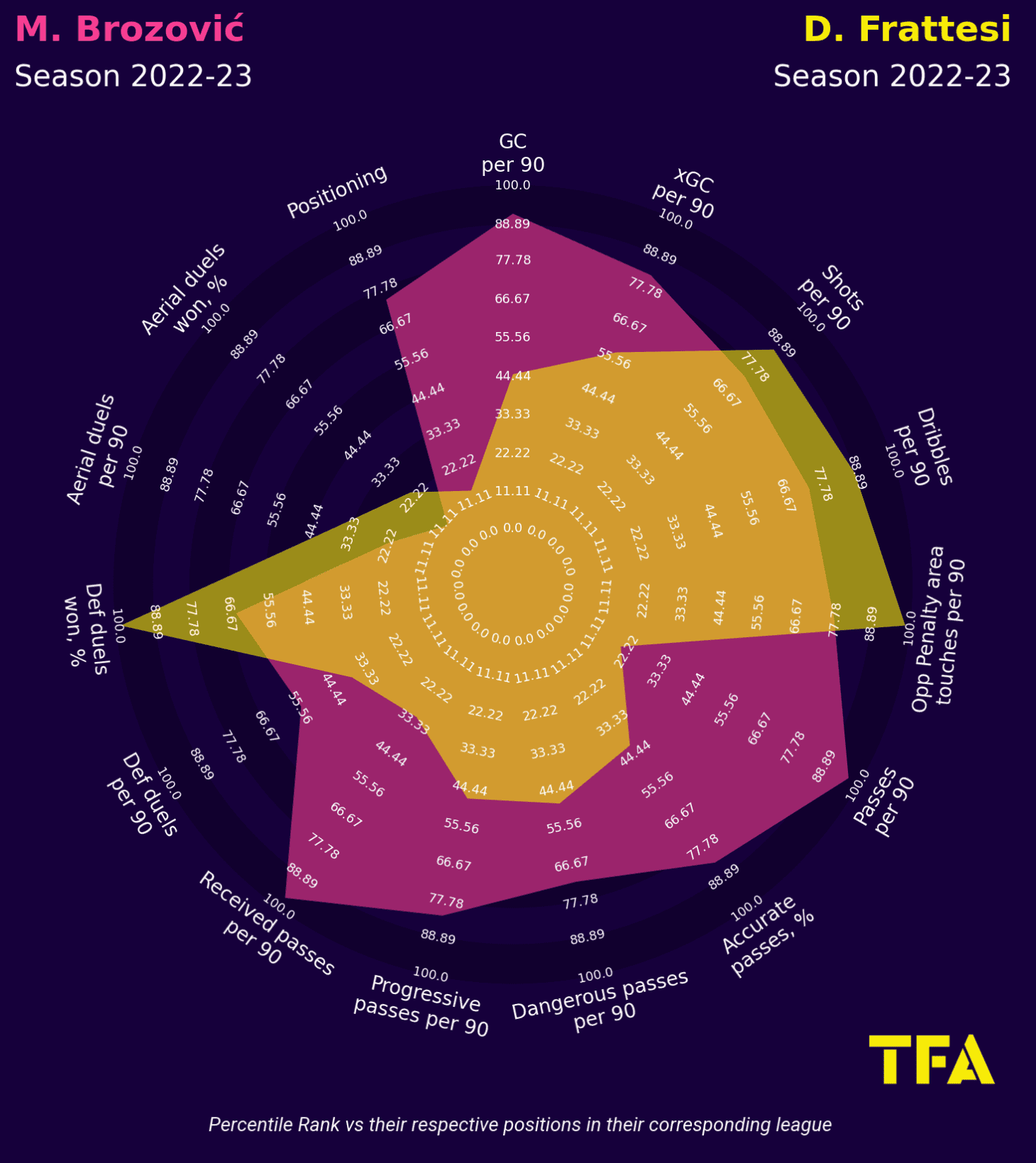
Contrary to some reports — and although Marcelo Brozović and Davide Frattesi do match up relatively similarly in some areas — they are different players with different attributes who act in slightly different positions on the field.
One of the most notable differences between the two midfielders’ respective displays last season is in the passing department. As we can see above, last season, the Croatian ranked around the 95th percentile in terms of passes per 90 minutes, while the Italian only ranked around the 20th. Besides, and even more importantly, Brozović had much higher precision in passing, ranking around the 85th percentile in pass accuracy (%), while Frattesi ranked in the 44th percentile.
Now, wait. Before jumping to conclusions on quality, let’s address that such disparity in passing has mainly occurred due to the level at which each player performed.
On the one side, we have Brozović, who played in a team who achieved the UEFA Champions League Final and liked to rule the game with possession. On the other, we have Frattesi, who played in a 13th-placed team in the Serie A table and obviously had considerably more difficulties maintaining possession than Inter.
Inter managed an average of 55.6% possession last season — fourth in Serie A — while Sassuolo kept 49.4% of the ball, which is 10th in the league. It’s not an equal comparison across the two teams, so we’d have to go deeper to assess the players’ passing quality and how it stacks up. Here’s where we can already start highlighting some significant differences.
Concerning the pass, the 30-year-old departing Inter midfielder is a risk-taker where he, according to Wyscout, not only has a higher percentage of forward and progressive passes than Frattesi but also made, on a game average, considerably more passes into the final third (7.4 passes against 3.33).
Even though Frattesi shows some reservations in making progressive passes into the final third, he is quite a vertical player. As shown below, he creates danger by making good movements behind the defensive line.

He is a player who feels comfortable making these runs and having the ball inside the box, where he can be a real threat. He is ranked in the 98.7th percentile on touches inside the opposition’s box, which means that, in his position, he is undoubtedly one of the Serie A players that has had a significant game impact in such a zone of the pitch.
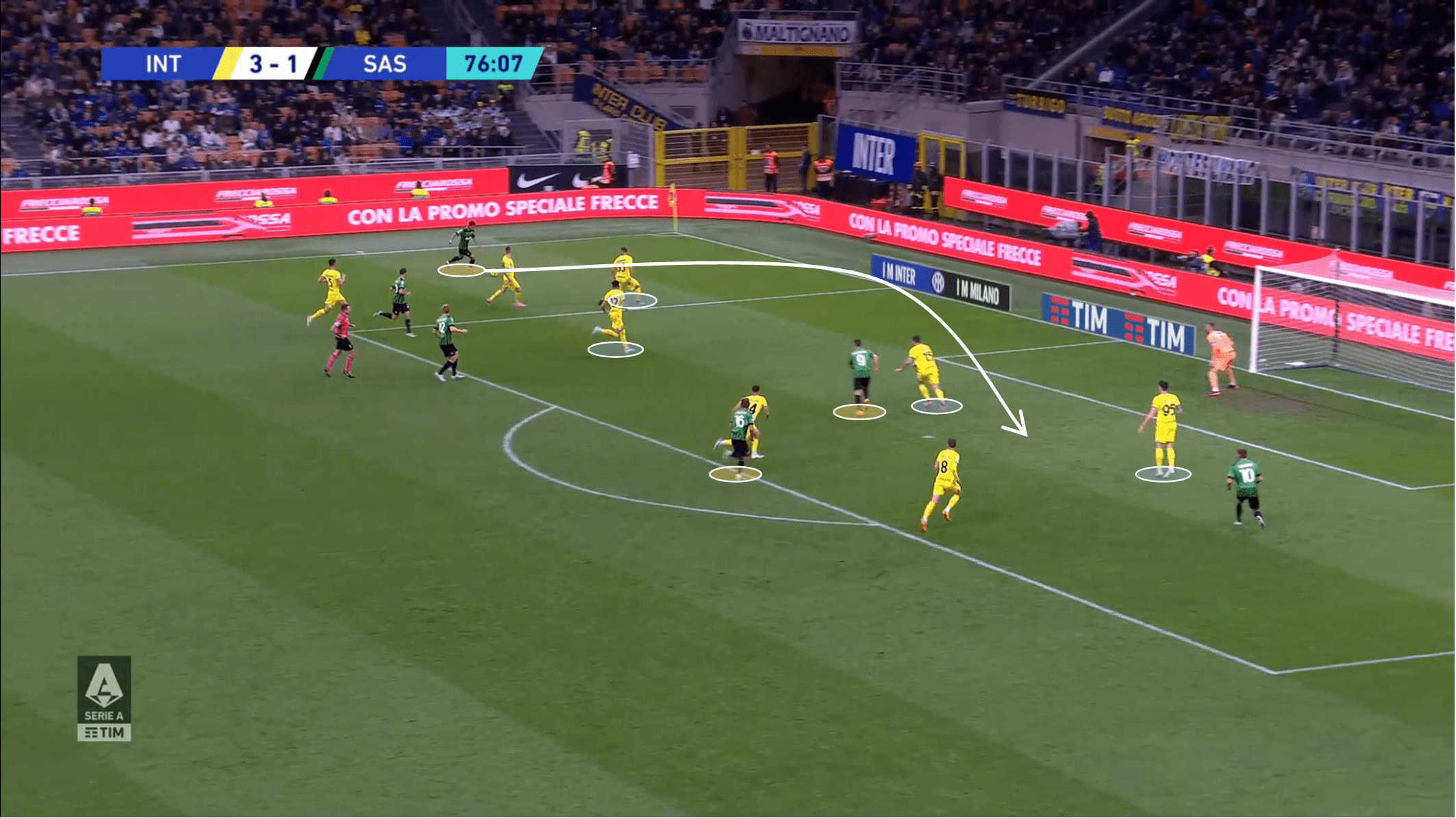
His consistent box presence is more noticeable in crossing situations, and as an example, we have a typical move from Frattesi which, in this case, ended as a goal.
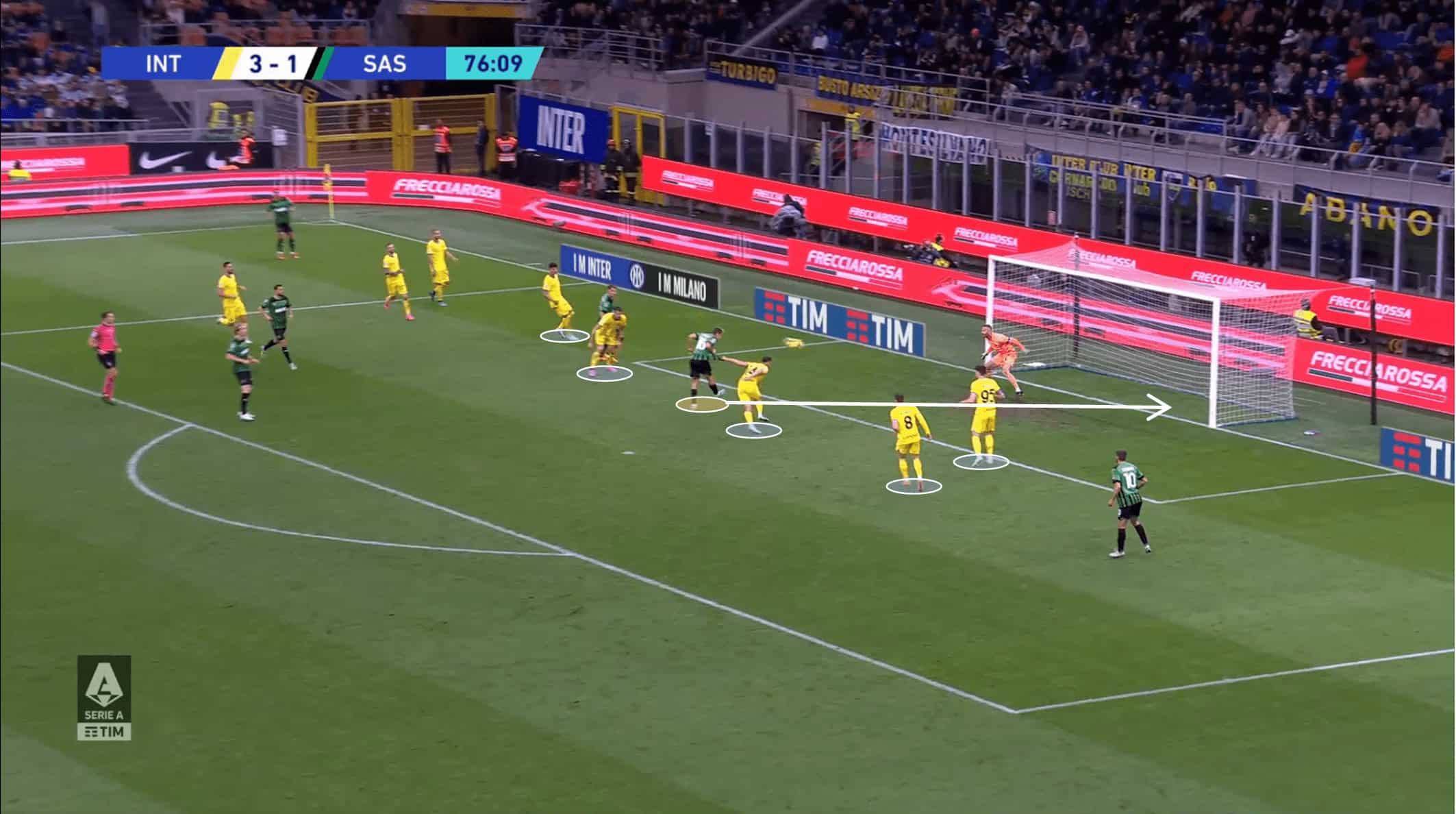
As we can see in the below image, all of his 2022/23 season goals’ were scored inside the box, which is a strong indicator of his routines during the offensive process.
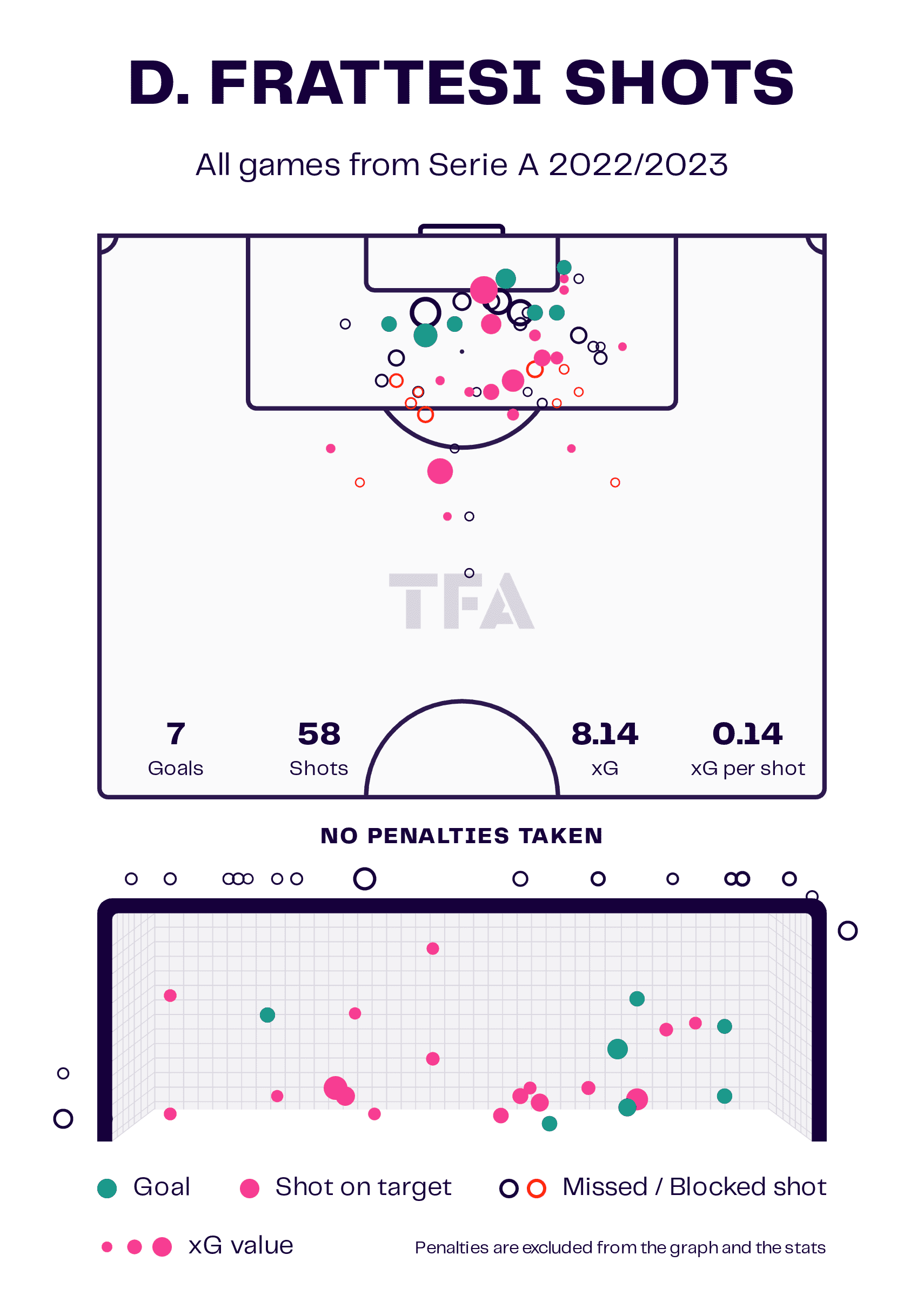
Continuing with the comparison between these two outstanding players, we also noticed that Brozović seems more technically capable on the ball, not only in passing as we saw previously but especially in maintaining possession in tight spaces.
Furthermore, as we referred to in our previous scout report on this player, Davide needs to continue to work on his shooting accuracy. Although the Italian has been improving in this feature, his goal conversion is still 12.69%, which is still a poor performance.
However, it is also important to highlight that for a player in his position, Frattesi appears quite audacious concerning the number of shots per game. Indeed, he ranks in the 88.6th percentile in shots per 90 minutes, which is a pretty good stat for him.
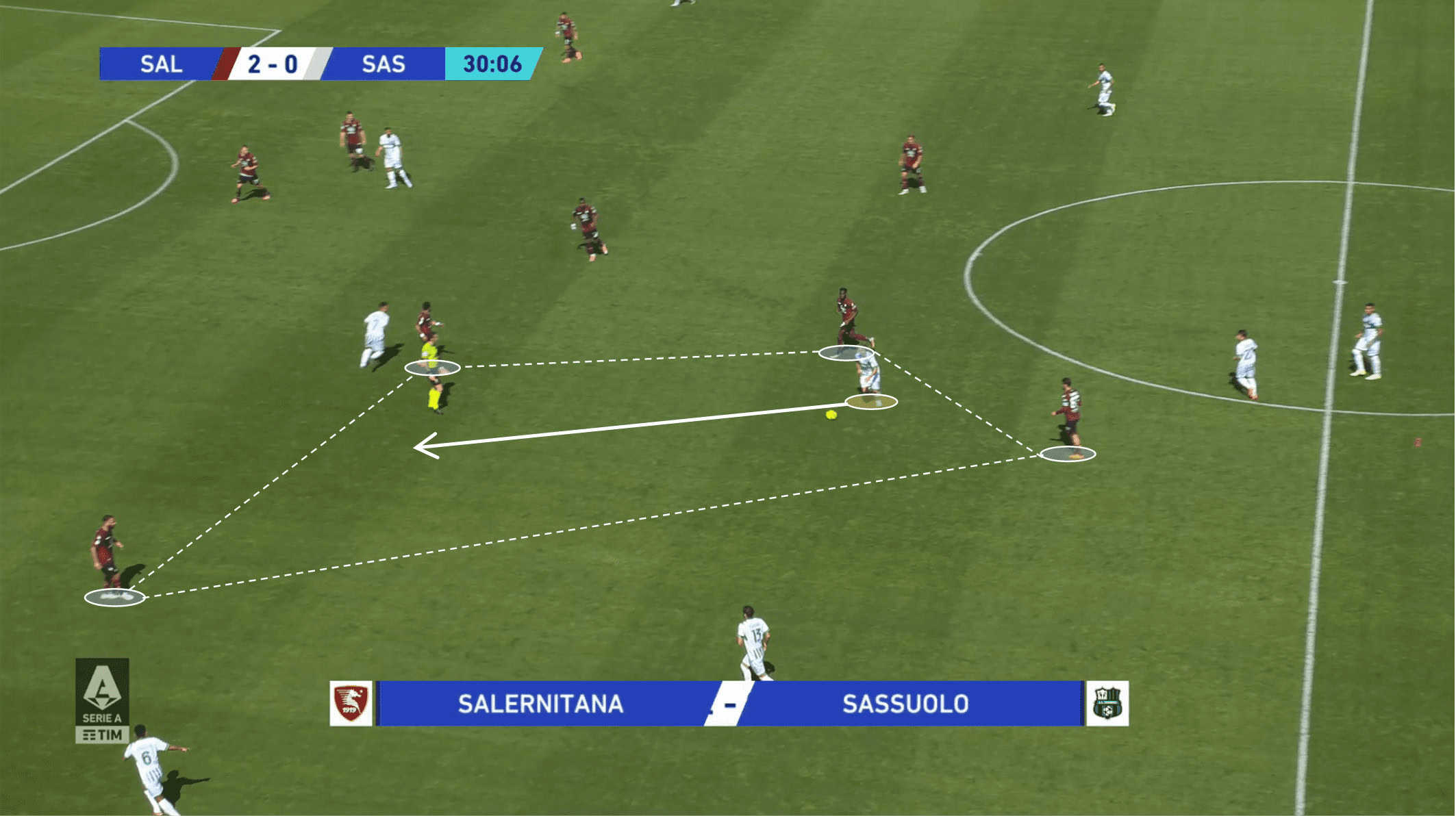
One of the best characteristics of Frattesi is his dribbling which brings him and his team closer to the opposition’s box. A potent combination of speed, explosiveness and strength make his dribble a vital feature of his game, and although he is not as technically evolved as Brozović, he can deliver more in this aspect.
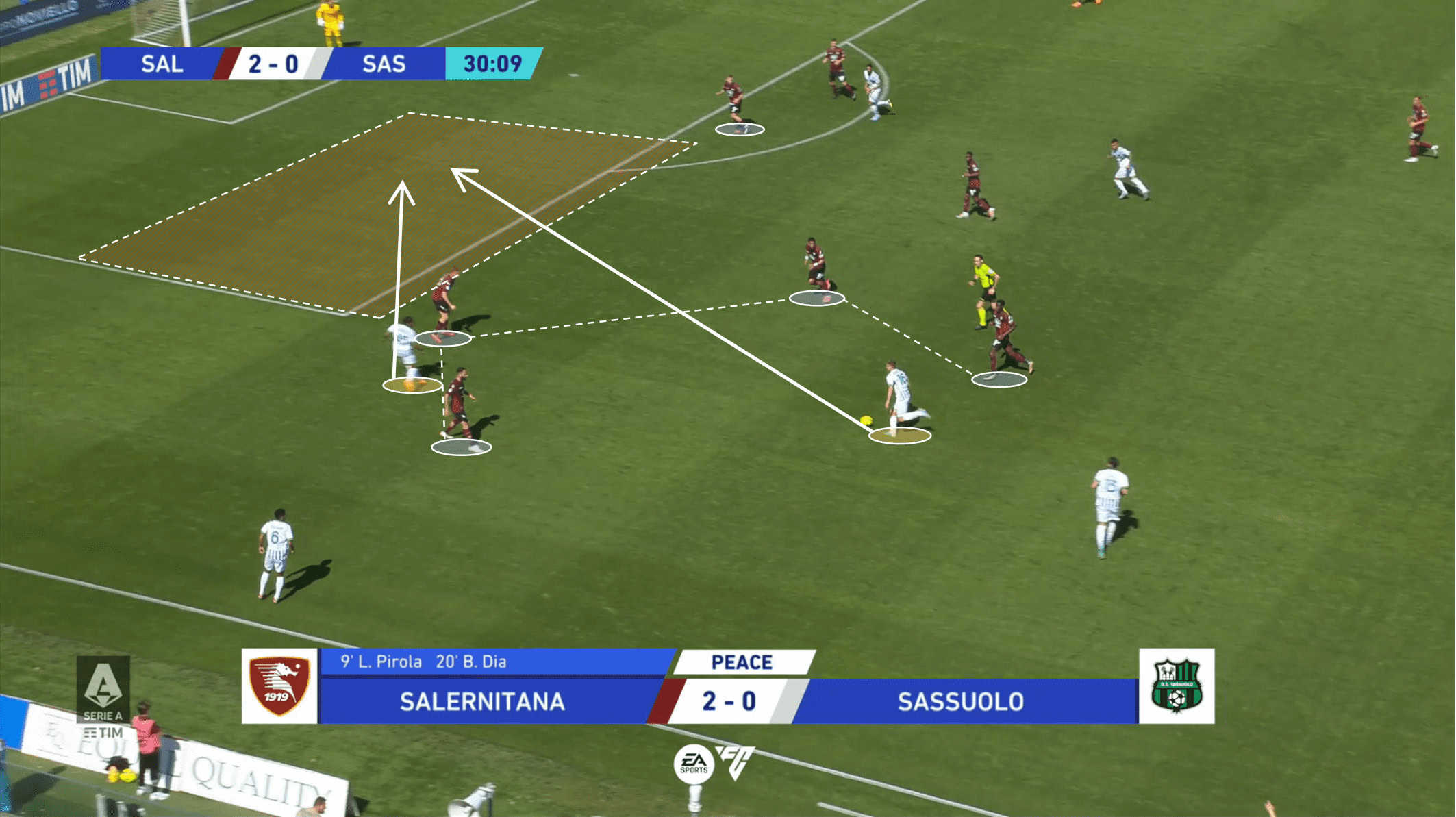
Concerning his defensive behaviour, we noticed that the Italian lacks aggressiveness even though Frattesi is physically stronger than Brozović. For example, on average, he only makes 0.05 sliding tackles, while Brozović stands with 0.72. Another indicator that we found interesting was related to discipline, where last season, Frattesi was booked only four times, while the Croatian was booked 13 times.
These two indicators analysed alone can be useless, but together they are pretty enlightening in such attribute analysis.
Where and how Frattesi can add value to Inter’s game
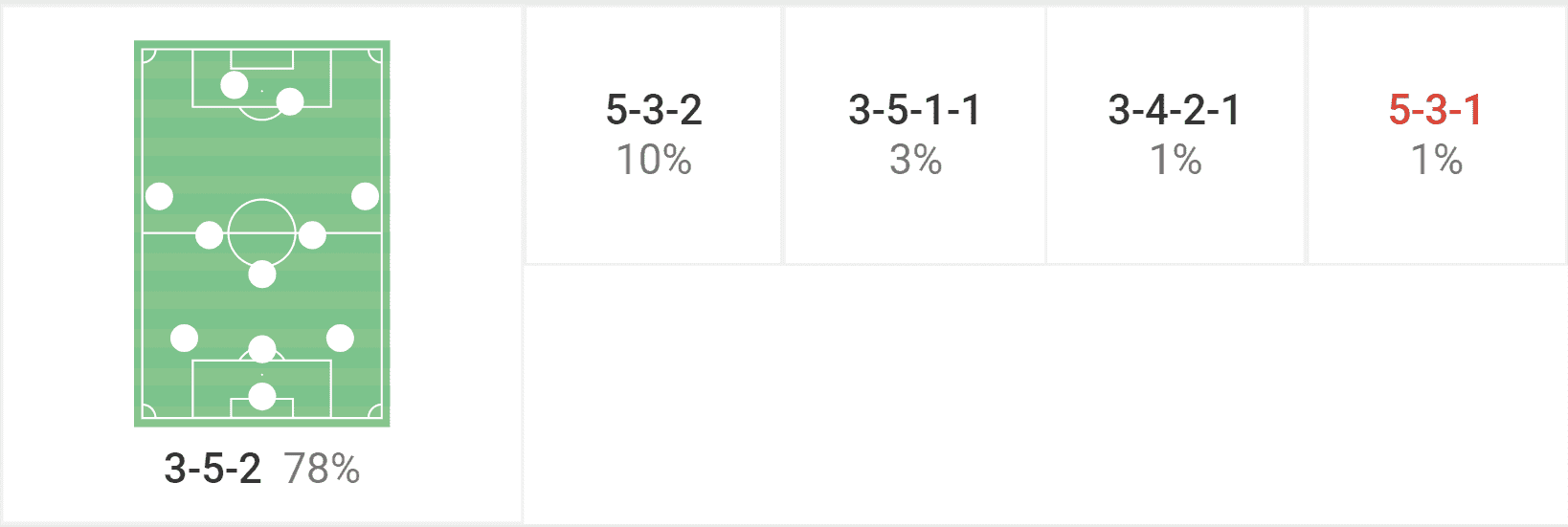
Under Simone Inzaghi, Inter normally organised in a 3-5-2 in possession with a single pivot and a 5-3-2 defensively. Lets’s start from the build-up, Inter likes to play from the back, and Brozović was fundamental to this process due to his remarkable tactical understanding and technical quality.
Inzaghi instructed his team to have some variations while constructing, and although they play with a 3-men-back-line and with a single pivot, there were times that one of the centrebacks jumped next to Brozović. The Croatian was intelligent and could align his positioning with his team’s, increasing the unpredictability and the odds of building up successfully.
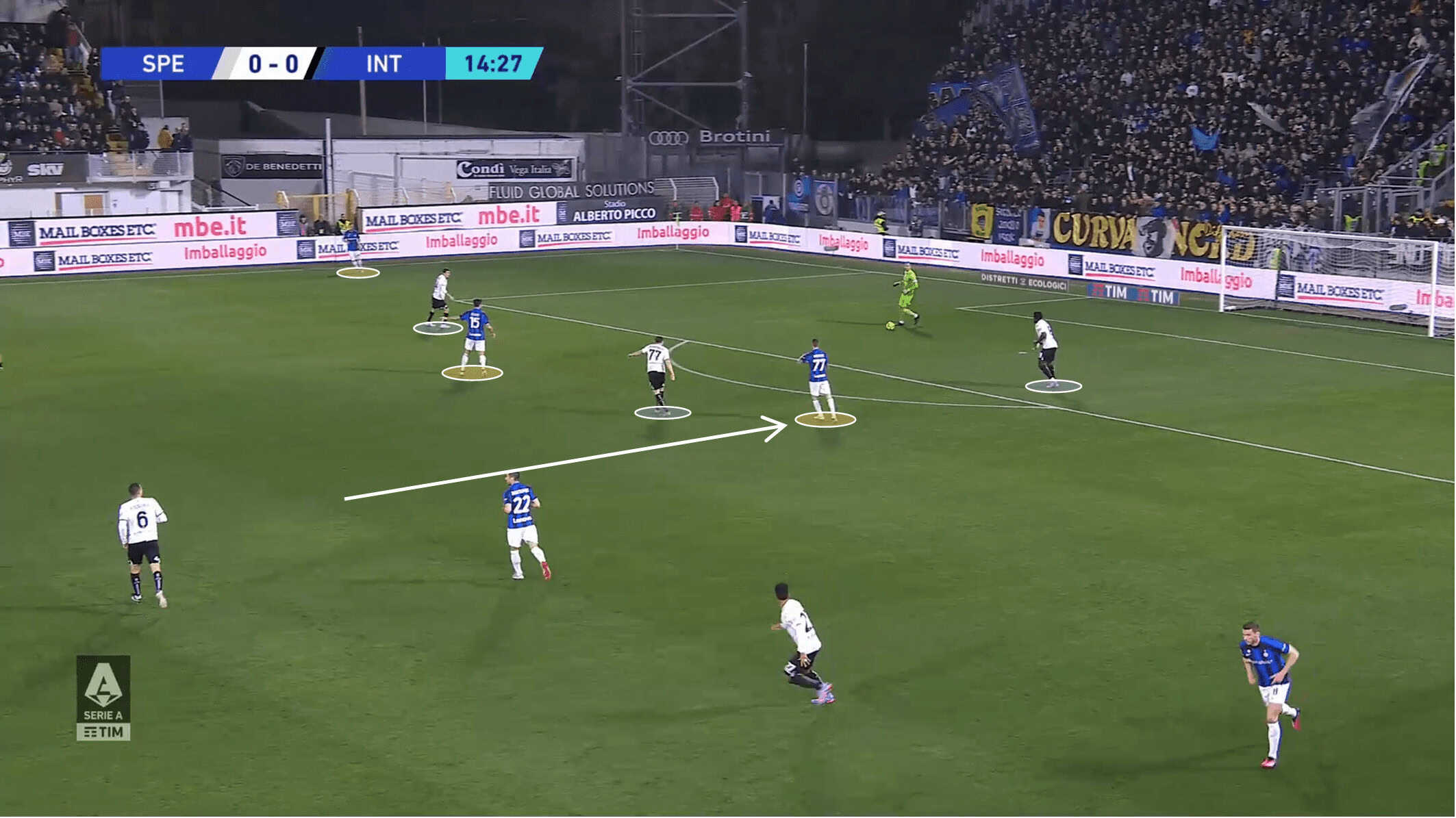
Although Frattesi plays further on the pitch, he also shows that he’s capable of playing lower on the pitch, helping his team to do well during build-up, though likely in a slightly more advanced role than the one Brozović played.
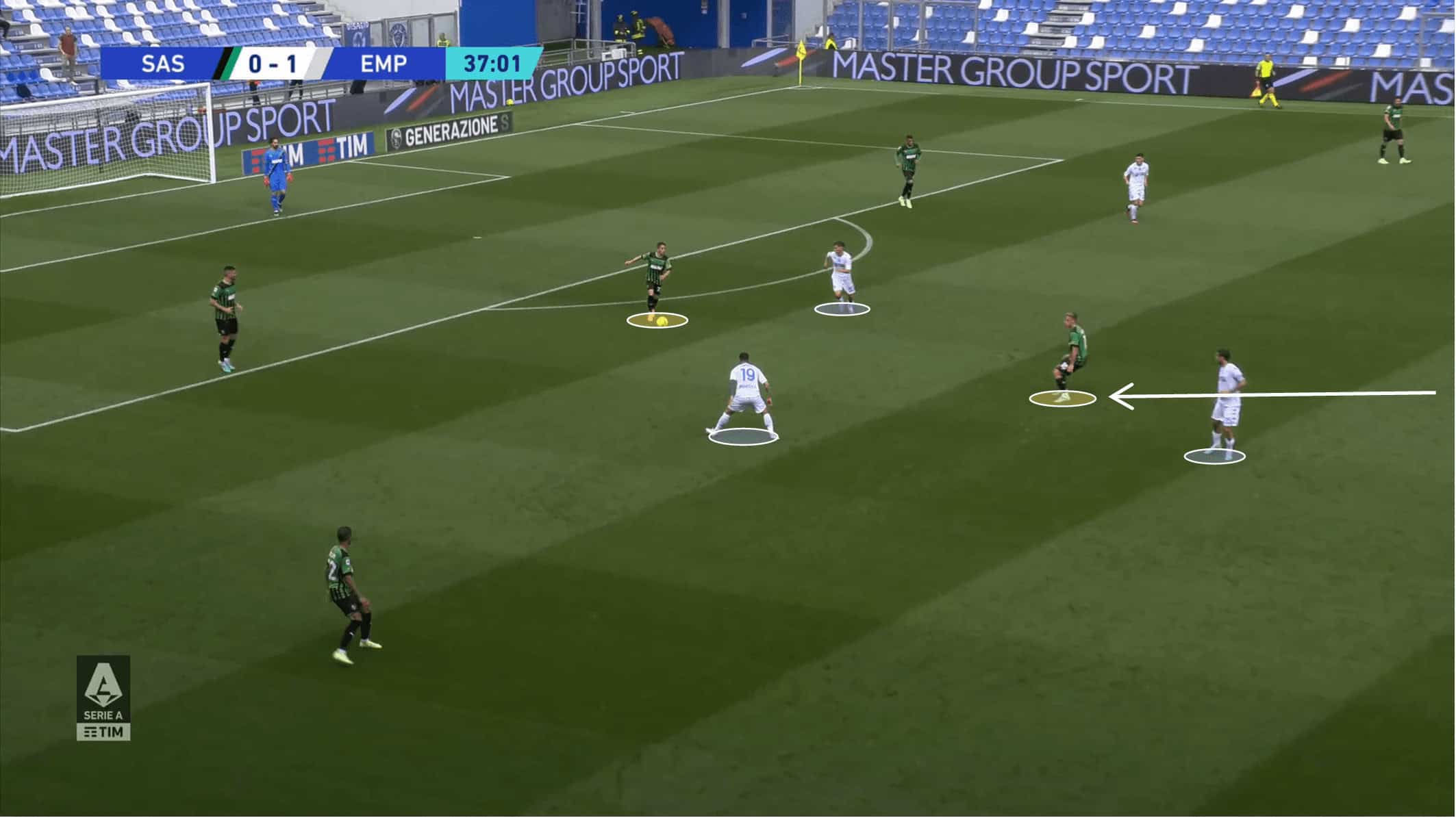
In a more advanced zone of the pitch, Inter often looks for depth attacks through long balls usually executed by the midfielders or centrebacks. If Frattesi played further as a centre midfielder, Inter could benefit from his wise and intelligent depth attack movements.
In addition, one of the main essential features that Farttesi can bring to Inter’s game is related to the transitions, especially in counterattacks. According to Wyscout, only 41.2% of the Inter’s counterattacks ended with a shot; such a stat is below average, and with Davide, the Nerazzurri can improve significantly in this aspect.
Defensively, Inter is generally used to press high, and this approach includes the pivot. In the following image, we can see Brozović pressing high almost on the opposition’s box.
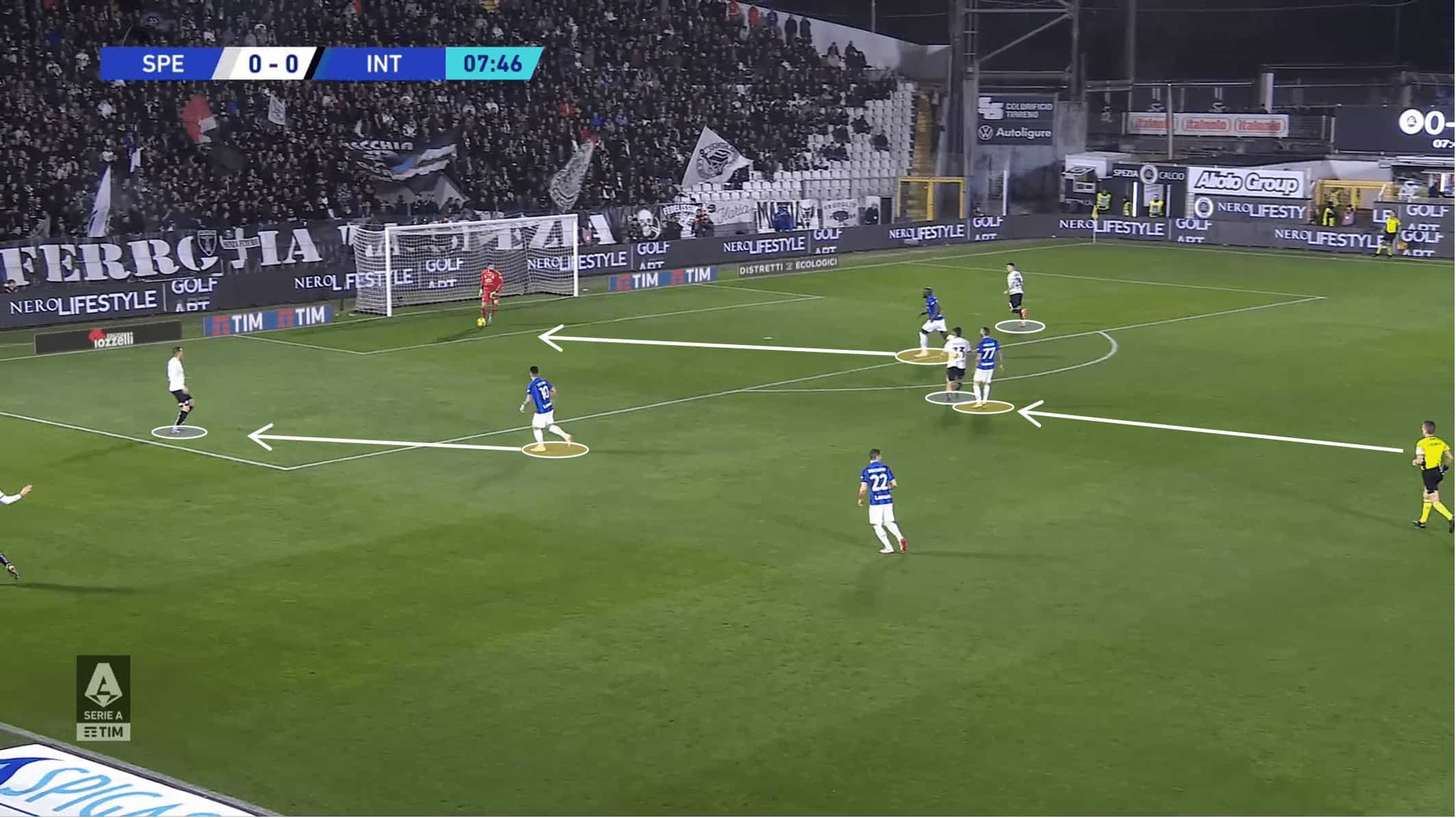
Similarly, Frattesi had the same behaviour at Sassuolo, which can be a positive indicator concerning his adaptation to the squad.
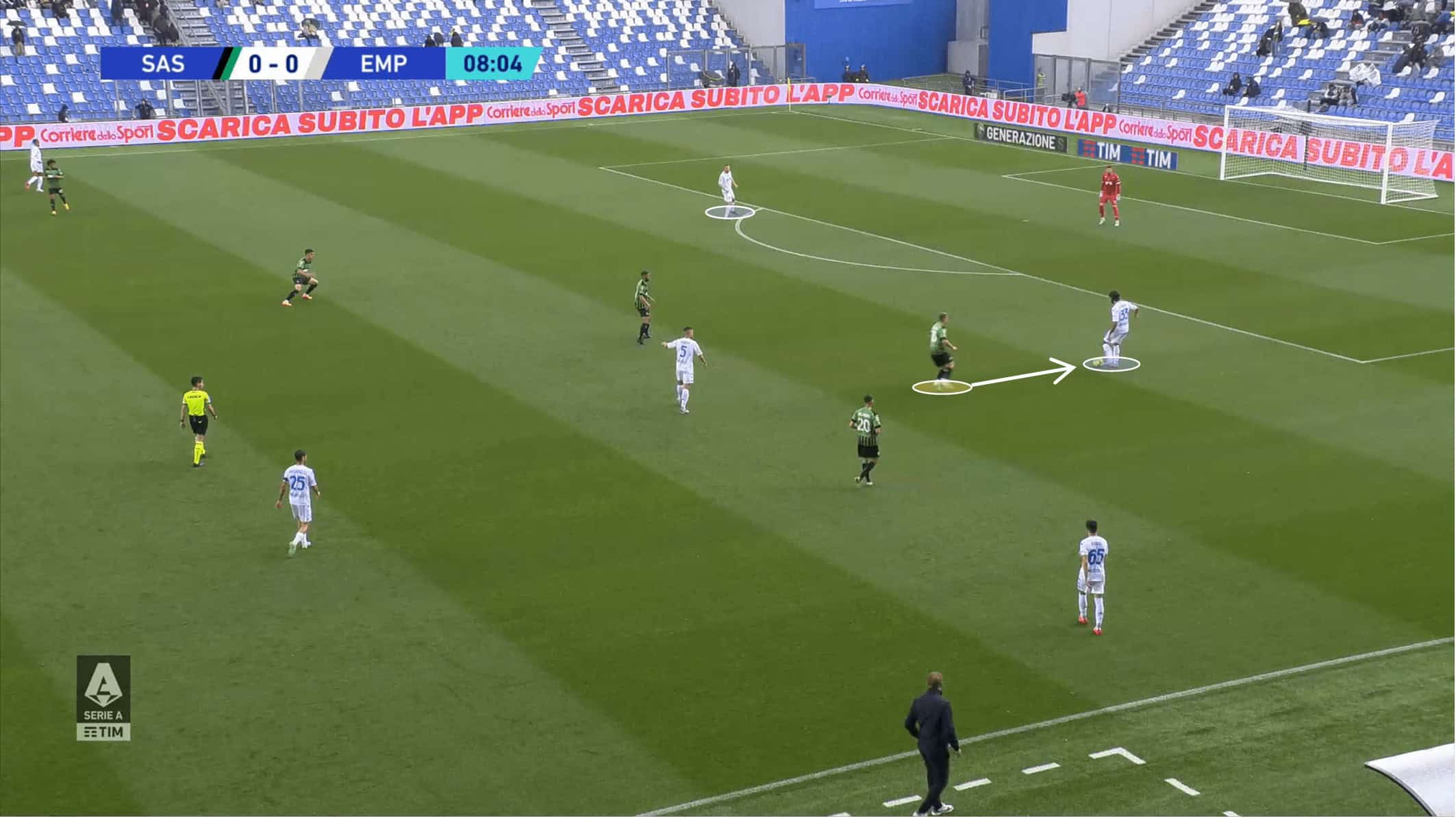
Out-of-possession awareness is an essential requirement to perform correctly as a defensive midfielder due to the defensive cohesion and solidity it provides.
Although Marcelo Brozović wasn’t one of the toughest players in that position, he was one of the best at understanding the game on and off the ball. For example, he is knowledgeable in understanding the covered and uncovered ball moments, leading him to uprise and descend on the pitch.
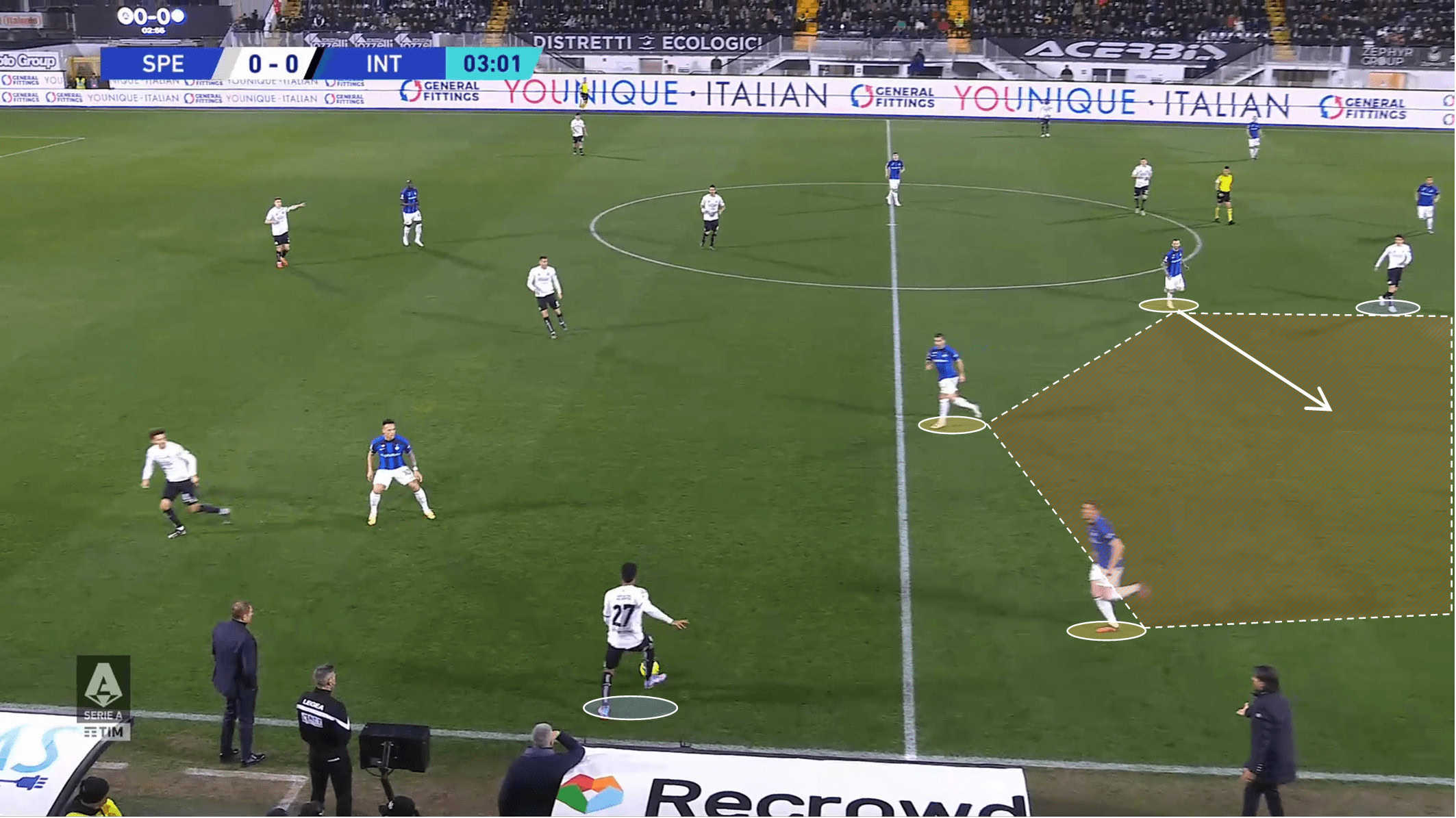
Davide Frattesi also showed signs of such tactical perception, and it is common to see him integrating the backline in uncovered ball and crossing situations, as it’s visible in the below image.
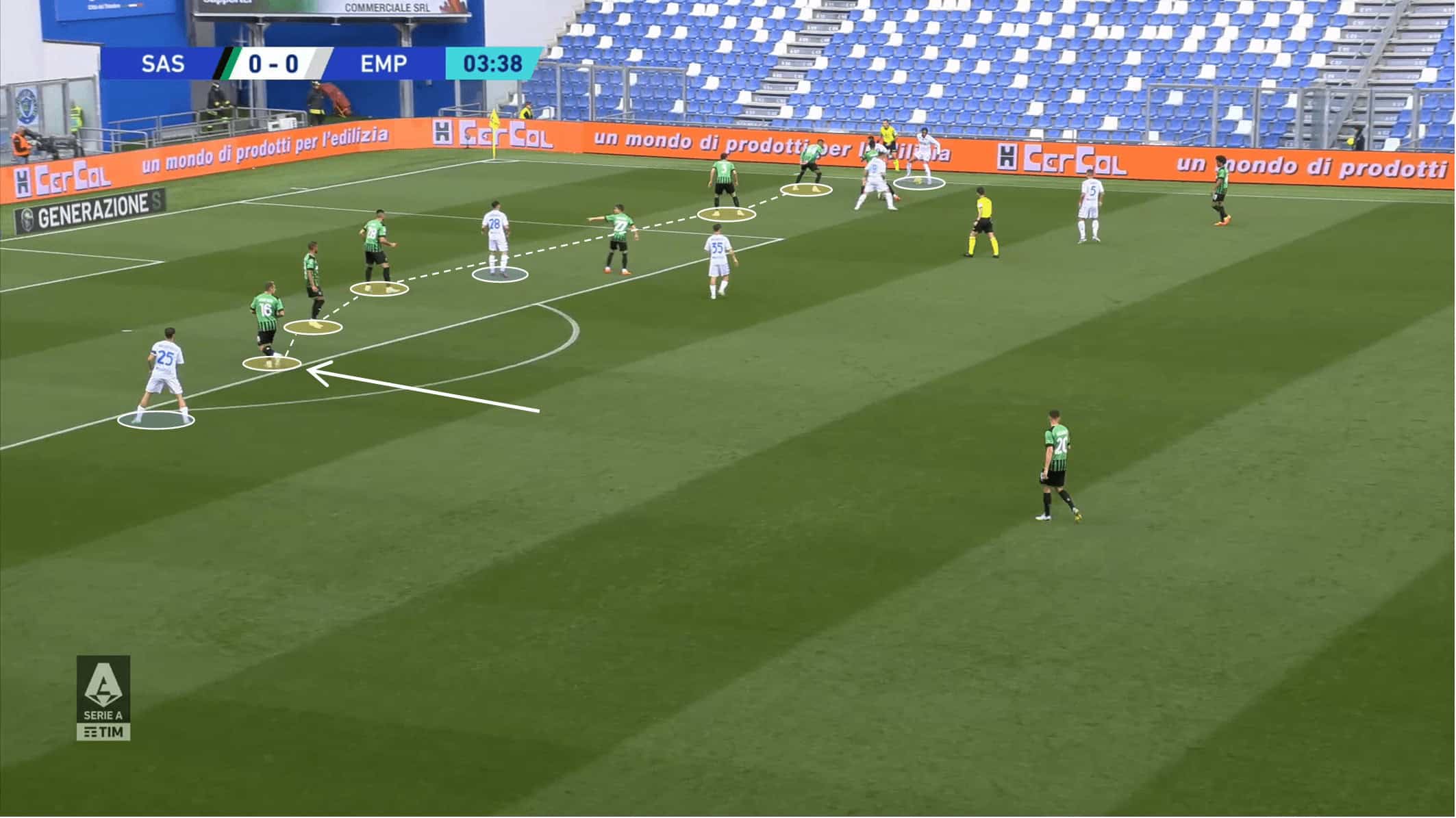
Other possible choices to further bolster Inter’s midfield
The 23-year-old arrived at Inter in a loan move from Sassuolo with a €6m fee, and an obligation buy clause of €27m. Yet there were and still are other options to replace Marcelo Brozović.
As we mentioned earlier, Frattesi is used to playing as a right-central midfielder. As it goes, such a summer move could have been made to expand Simone Inzaghi’s options and to increase competitiveness in that particular position.
If that’s the case, Inter can still use the time left in the transfer window to bring in a high-quality player whose primary position is a defensive midfielder. Franck Kessié, currently at FC Barcelona, was one of the names that came up in the past few weeks.
Yet, still considering that Frattesi would play ahead of the pivot, Inzaghi could bet on the youngster Kristjan Asllani who already had several minutes for Inter last season. The Albanian is seen as an exciting promise for the Nerazzurri, and the following season can be his turning point.
Conclusion
The departure of Brozović forced Inter Milan to find a new capable solution for the defensive midfielder position. As it goes, in this scout report, we initially explored the main differences between Frattesi and the Croatian and how this search may still be ongoing.
Frattesi is a box-to-box midfielder who is vital in transporting the ball from his own half to near the opposition’s goal, and such a feature can help Inter to be a more effective team in their counterattacks.
As a direct replacement for Brozović, Inter seems vigilant to external options like, for instance, Franck Kessié’s. Furthermore, although less experienced, Asllani can be an exciting option for that position.

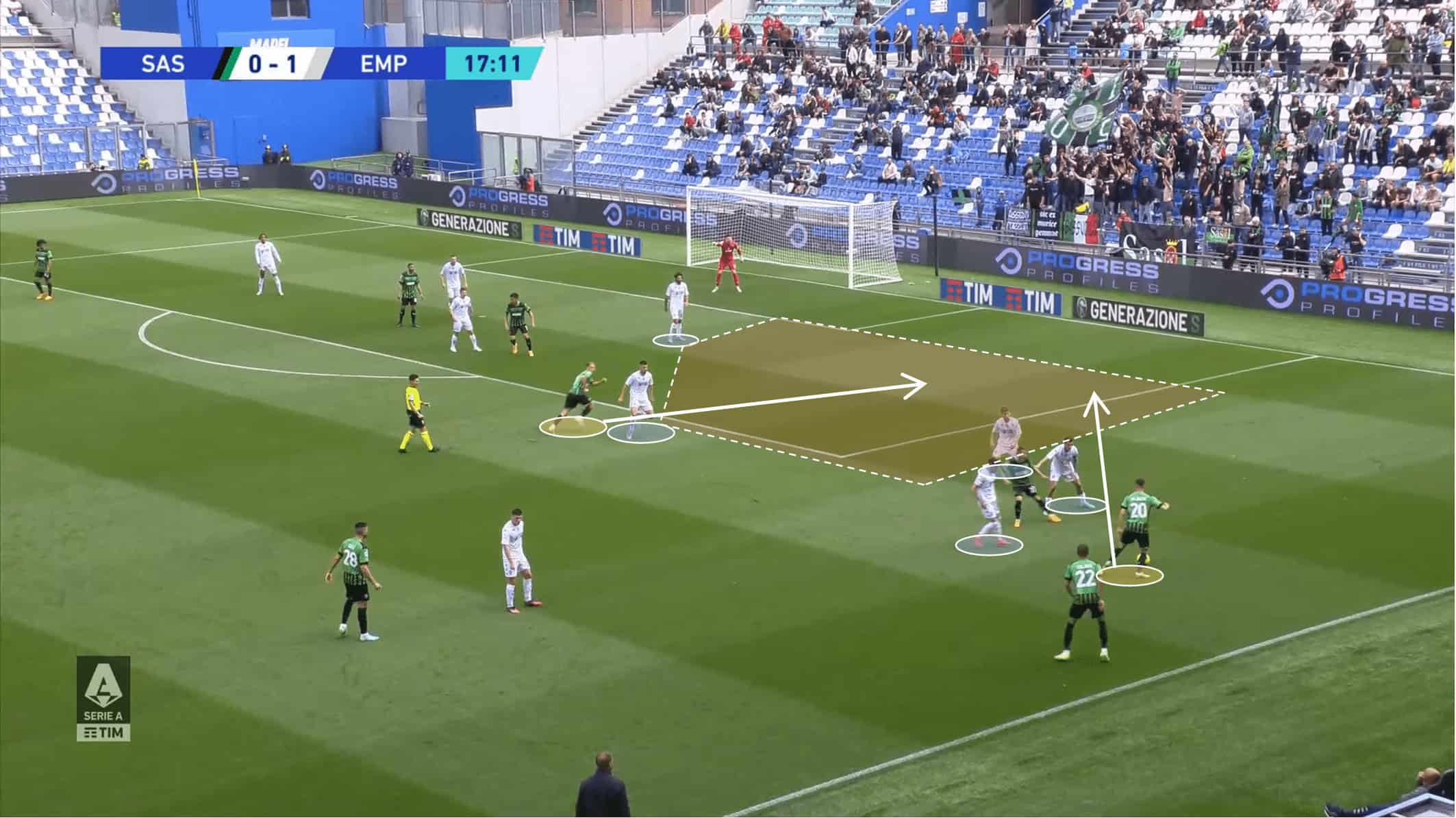




Comments